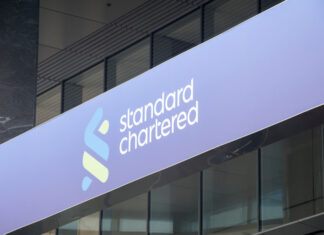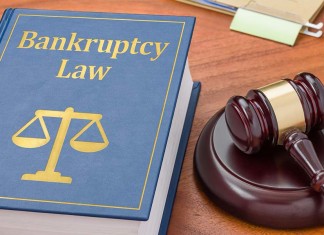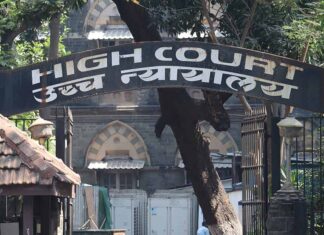Home Search
Search results: Insolvency and Bankruptcy Code, 2016
TM rights in ‘Shakti Bhog’ controversy amid insolvency proceedings
Amid the ongoing criminal proceedings alleging fraud and money laundering against officers of the Shakti Bhog companies and of creditor bank employees, insolvency proceedings are underway and have been for some time. A dispute...
New MCA policy standardises review of existing regulations
The Ministry of Corporate Affairs (MCA) has introduced a new policy that requires regulators to conduct pre-legislative consultations and a full review of existing rules and regulations.
The policy aims to increase transparency, engagement with...
Call for comment on real estate insolvency amendments
In a bid to streamline real estate insolvency procedures, the government has unveiled a discussion paper about mitigating challenges encountered during corporate insolvency resolution processes (CIRPs).
The discussion paper, released on 6 November 2023, delves...
Insolvency and Bankruptcy Code prevails over Electricity Act
The Supreme Court (SC) recently held that the provisions of the Insolvency and Bankruptcy Code, 2016 (IBC), override those of the Electricity Act, 2003 (act), so far as they relate to the recovery of...
Argus acts for Standard Chartered to recover debts from Prag
Argus Partners has assisted Standard Chartered Bank to recover debts from a company in insolvency and liquidation proceedings before the National Company Law Tribunal (NCLT).
In Standard Chartered Bank v Prag Distillery Private Limited (2017),...
Indian law takes off for international standards
Whether Leonardo da Vinci in medieval Italy or John Secondari in 1965 US said, “Once you have tasted flight, you will forever walk the earth with your eyes turned skyward, for there you have...
Law stands above commercial wisdom
The Supreme Court’s 3 May judgment, in MK Rajagopalan v Dr Periasamy Palani Gounder & Anr, shows insolvency resolution plans must be approved by a committee of creditors before being put to an adjudicating authority.
The...
Supreme Court allows Ezeego, Yatra to settle insolvency dispute
The Supreme Court on 2 May allowed Ezeego One Travel and Tours to withdraw its insolvency dispute against Yatra Online following a settlement where Yatra would pay Ezeego INR16 million (USD194,000).
Earlier in March 2023,...
S&R advises creditors’ committee on Indian Steel insolvency
S&R Associates advised the committee of creditors of Indian Steel Corporation’s corporate insolvency resolution and acquisition by AM Mining India.
Partners Divyanshu Pandey and Sudip Mahapatra led the S&R team, with assistance from associates Apurv...
No automatic right to wages during insolvency resolution
There has been considerable discussion over whether salaries to employees should be treated as costs in the corporate insolvency resolution process (CIRP). If they are so regarded, those wages will assume priority over other...
Supreme Court decision clouds insolvency process
The Supreme Court’s judgment in the case of Vidarbha Industries Power v Axis Bank opened a Pandora’s box earlier this year when it unsettled a long established practice of the adjudicating authority admitting insolvency...
Solving the problem of interest and insolvency
The component of interest has played a significant role in the admission of a company into insolvency where the required monetary threshold is partially unmet. The question that arises in these situations is whether...
NCLT’s ability to issue warrants strengthens insolvency resolution
The inability to resolve the insolvency of a corporate debtor does not merely stem from the fact that the entity is, in fact, distressed. In many cases, the resolution professional (RP) is unable to...
Cheques and balances
The number of criminal cases filed against cheque defaulters has overwhelmed India’s judicial system. One obvious solution is to decriminalise what is often a civil dispute, but lawyers aren’t convinced that’s the answer. George...
Insolvency resolution process has time limits
The Supreme Court, in the matter of Committee of Creditors of Amtek Auto Limited through Corporation Bank v Dinkar T Venkatsubramanian, observed that the entire resolution process had to be completed within the period stipulated...
India and Singapore relax over stressed assets
The Insolvency and Bankruptcy Code, 2016 (code) provides for the comprehensive rules-based resolution of insolvent corporate debtors, and has become a significant and successful means of stressed asset resolution. The success of the code...
GCCL Infra first to take pre-pack insolvency route
GCCL Infrastructure & Projects (GCCL) has become the first to initiate the pre-packaged insolvency resolution process (PIRP), which was subsequently admitted by the Ahmedabad bench of the National Company Law Tribunal.
To deal with the...
Delays and inconsistent treatment reduce RERA’s effectiveness
RERA, or the Real Estate (Regulation and Development) Act, 2016 (act) and the Real Estate Regulatory Authority established under it, aimed to balance the interests of the various stakeholders in the real estate ecosystem,...
IBC and exclusions from committee of creditors
During the corporate insolvency resolution process (CIRP), the committee of creditors (COC) is the de facto board of the defaulting company. The COC is constituted after collating all the claims on the debtor, and...
NCLT proper forum for power purchase agreement insolvency
The Supreme Court has ruled that the National Company Law Tribunal (NCLT) has jurisdiction under the Insolvency and Bankruptcy Code, 2016 (IBC) in disputes involving Power Purchase Agreements (PPA). Gujarat Urja Vikas Nigam Limited...
IBC decides the fate of PPAs in insolvency
A power purchase agreement (PPA) is essential not only for the way a power project functions, but also for its very existence. There has, however, been significant uncertainty regarding the status of power generators...
Retrospective domestic measures and international investment protection
In two cases in 2020, Vodafone and Cairn Energy, India lost significant arbitral awards. These awards followed retrospective measures imposed on foreign investments, despite bilateral investment treaties (BIT) that protect foreign investors from unfair...
The committee of creditors and its commercial wisdom
The Insolvency and Bankruptcy Code, 2016 (code) was enacted to enable corporate insolvency resolution of financially stressed corporate debtors in a time bound manner, so as to maximise the value of their assets. The...
GST seizure and confiscation still causing problems
Sections 129 and 130 of the Central Goods and Services Tax Act, 2017, have frequently raised problems. Section 129 provides for the detention, seizure and release of goods and conveyances in transit. Section 130...
Impact of insolvency and bankruptcy code on MSMEs
Micro, small and medium enterprises (MSME) contribute 8% to GDP, employ 106 million, that is 40% of the workforce, produce 45% of manufacturing output and 40% of total exports. While MSMEs play a vital...
Gambling laws: Interpretations and issues
The Public Gambling Act, 1867 (Gambling Act), enacted prior to the constitution is the central law governing gambling in India. While under entry 34 of list II of schedule VII of the constitution, “betting...
Keeping the power on during insolvency
The National Company Law Appellate Tribunal (NCLAT) in Gujarat Urja Vikas Nigam Ltd (GUVNL) v Yes Bank Limited recently confirmed a National Company Law Tribunal (NCLT) decision restraining GUVNL from terminating the power purchase...
Assigning NRRAs and claims during liquidation
While the Insolvency and Bankruptcy Code, 2016 (code), stipulates that the liquidation of a corporate debtor must be completed within one year from its commencement date, most liquidations continue beyond that period. Among other...
Guarantors may be vulnerable to pandemic default risks
The government recognised the economic impact of covid-19 on businesses by enacting the Insolvency and Bankruptcy Code (Amendment) Ordinance, 2020. The ordinance, among other measures, inserted section 10A into the Insolvency and Bankruptcy Code,...
Lifeline for MSMES dragged down by pandemic
The pandemic and ensuing economic crisis have disproportionately impacted micro, small and medium enterprises (MSMEs). A large number of them face dire operational and financial constraints including a shortage of working capital, difficulty in...
How to balance the IBC and the PMLA
The Prevention of Money Laundering Act, 2002 (PMLA) seeks to prevent money laundering, to prosecute those committing money laundering and to recover and seize properties acquired by means of laundered money. However, the effective...
COVID-19, IBC suspension and operational creditors
The Insolvency and Bankruptcy Code (Amendment) Ordinance, 2020 (ordinance), provides that no application to start a corporate insolvency resolution process (CIRP) in respect of a corporate debtor may be made for any default arising...
How to implement pre-packaged insolvency
Since last year, the government has been considering introducing pre-packaged insolvency schemes within the framework of the Insolvency and Bankruptcy Code, 2016 (IBC). With COVID-19 severely affecting the credit ecosystem, however, the right to...
Overlap between insolvency code and arbitration law
Arbitral awards are treated as orders of a court and can be enforced as such, under the Civil Procedure Code, 1908 (CPC), subject to defences under the Arbitration and Conciliation Act, 1996. The Insolvency...
Reverse insolvency to the rescue in housing projects
The National Company Law Appellate Tribunal (NCLAT) in Flat Buyers Association Winter Hills – 77, Gurgaon v Umang Realtech Pvt Ltd & Ors, brought by disaffected flat buyers of the Winter Hills project represented...
NBFCs brought under purview of insolvency code
With the introduction of a codified law on insolvency and bankruptcy processes, restructuring jurisprudence entered a new era. While the new law focused on rehabilitating and restructuring stressed companies, restructuring processes involving financial service...
Harmonizing IBC and money laundering laws
The interplay between the Insolvency and Bankruptcy Code, 2016 (IBC), and the Prevention of Money Laundering Act, 2002 (PMLA), has been the subject of much debate. In light of multiple conflicting decisions of various...
Insolvency rules issued for financial services providers
The presence of insolvency rules for non-financial companies in the form of the Insolvency and Bankruptcy Code, 2016 (IBC), and the lack of similar rules for financial companies led to a peculiar dichotomy. The...
Resolution of disputed claims in insolvency process
One of the key issues in the corporate insolvency resolution process (CIRP) under the Insolvency and Bankruptcy Code, 2016 (code), is the status and resolution of disputed claims. This has now been set to...
Insolvency and related considerations for directors
Directors of a company in financial difficulty should be aware that their conduct may be subject to close scrutiny if the company falls into insolvency under the Insolvency and Bankruptcy Code, 2016, as amended....
Sole proprietary concerns cannot file insolvency petitions
The National Company Law Tribunal (NCLT), Delhi in a recent judgment held that insolvency proceedings cannot be initiated by sole proprietary concern as the “sole proprietary concern” is not a person within the meaning...
Recent amendments to insolvency regulations
With the introduction of The Insolvency and Bankruptcy Code (Amendment) Bill, 2019, on 24 July 2019 in the Rajya Sabha, the government has sought to amend the Insolvency & Bankruptcy Code, 2016. Earlier, the...
Choosing between business transfers and demergers
Until 2015, demergers were a popular form of divestment, where the business would be transferred under a court approved scheme as a going concern to the acquirer. Despite the fact that a typical scheme...
Creditors browbeat debtors with bankruptcy threat
“When secured creditors like the respondent are driven from pillar to post to recover what is legitimately due to them, in attempting to avail of more than one remedy at the same time, they...
Many hurdles in Deccan Chronicle insolvency
The legal team that advised on the Deccan Chronicle Holdings insolvency had to contend with multiple issues and challenges. The National Company Law Tribunal (NCLT) approved the resolution plan put forward by SREI Multiple...
Historic mandate
Challenges abound as India’s new government takes charge
Applause for the efficient running of the recent elections has been loud and long. With 900 million potential voters, 12 million polling workers and a million polling...
Insolvency code: Judicial trends
Abhishek Tripathi and Avantika Shukla look at role of adjudicating bodies in IBC's evolution
The Insolvency and Bankruptcy Code, 2016 (IBC), is considered to be among the biggest achievements of the National Democratic Alliance (NDA)...
Investing through insolvency code
IBC has created opportunities for equity and debt investors alike, write Sanjay Asher and Nikhil Kaul
The Insolvency and Bankruptcy Code, 2016 (code), notified by the government of India in May 2016, was in response...
SC weighs in on interplay of labour laws and IBC
India as a welfare state has enacted various labour laws in order to ensure the protection and promotion of the social and economic status of workers and the elimination of their exploitation.
Under the Indian...
Trade unions are operational creditors under insolvency code
The Supreme Court, in the recent case of JK Jute Mill Mazdoor Morcha v Juggilal Kamlapat Jute Mills Company Ltd through Its Director & Ors, held that a trade union can file as an operational...
IBC: Law of guarantees and corporate insolvency process
The National Company Law Appellate Tribunal (NCLAT), in its recent ruling in the case of Vishnu Kumar Agarwal v Piramal Enterprises Ltd, while examining the validity of an application made under section 7 of...
Rescue financing: Helping hand for entities in distress
Super priority lending (also known as rescue financing) has been recognized in many jurisdictions. In India, it has now been expressly covered, to some extent, under the Insolvency and Bankruptcy Code, 2016 (IBC). It...
Time-barred debts and the insolvency code
The Insolvency and Bankruptcy Code, 2016, has been construed as a complete code. Based on that construction and noting that the code contained no provision expressly making the Limitation Act applicable, and as the...
Existence of dispute under insolvency code
Under the Insolvency and Bankruptcy Code, 2016, the corporate insolvency resolution process (CIRP) can be initiated by an operational creditor if there is no dispute in relation to the default on the part of...
Revisiting loan documents in light of insolvency code
The interests of banks, financial institutions and other lenders and recovery of loans advanced by them is at the heart of the insolvency framework introduced by the Insolvency and Bankruptcy Code, 2016 (code). Although...
Cross-border insolvency report: A bird’s eye view
The Insolvency Law Committee issued a report on cross-border insolvency in October after considering public comments received on a draft framework issued by the Ministry of Corporate Affairs. The committee considered the UNCITRAL Model...
Managing and mitigating risks in distress transactions
In the last two years, we have seen a significant rise in M&As, largely driven by big ticket consolidation across sectors as companies divested distressed assets in an effort to reduce debt. The Insolvency...
Unfair balance: Guarantees and the insolvency code
The uncertainty on whether guarantees would attract moratorium under section 14 of the Insolvency and Bankruptcy Code, 2016 (code), has ended with the promulgation of the Insolvency and Bankruptcy Code (Amendment) Ordinance, 2018 (ordinance).
This...
Cross-border insolvency requires a new framework
While a corporate entity may have creditors, debtors and assets in various countries, the Insolvency and Bankruptcy Code, 2016 (IBC), in its current avatar has no comprehensive legal framework on cross-border insolvency (CBI). The...
NCLAT clarifies ‘dispute’ under the insolvency code
The National Company Law Appellate Tribunal (NCLAT) recently held in an appeal against the Allahabad bench of the National Company Law Tribunal (NCLT) that any disputes within a corporate debtor company is not one...
Changes aim to halt abuse of insolvency proceedings
A rise in high-profile banking frauds led to the Insolvency and Bankruptcy Code (Amendment) Ordinance, 2018. The ordinance, effective from 6 June, presses for greater transparency in the corporate insolvency resolution process (CIRP), to...
IBC’s position on supply of essential goods and services
Dear Editor,
Section 14(2) of the Insolvency and Bankruptcy Code, 2016 (IBC), states that the “supply of essential goods or services to a corporate debtor shall not be suspended during the moratorium period”. The purpose...
Sound insolvency resolution key to infrastructure growth
Infrastructure developers in India have traditionally placed significant reliance on bank financing for infrastructure development. However, because of aggressive bidding, delayed payments causing strain on cash flows and lack of a secondary market for...
Jury is out on aspects of winding up and insolvency
Winding up proceedings were earlier initiated and conducted under the Companies Act, 1956. However, with the coming into force of the Companies Act, 2013, and the Insolvency and Bankruptcy Code, 2016 (IBC), the process...
President promulgates amendment to insolvency and bankruptcy law
The Insolvency and Bankruptcy Code (Amendment) Ordinance, 2017, dated 23 November 2017, was promulgated by President RN Kovind to amend the provisions relating to the insolvency resolution process contained in the Insolvency and Bankruptcy...
Demand notice filing procedure clarified for lawyers
The Supreme Court had the opportunity to settle the law on important questions arising under the Insolvency and Bankruptcy Code, 2016 (IBC), which have impaired operational creditors from enforcing their rights under the IBC.
In...
Insolvency ordinance: A boon or a bane?
The Insolvency and Bankruptcy Code (Amendment) Act, 2017, is based on an ordinance promulgated by the president on 23 November. It is intended to improve the credibility of the corporate insolvency resolution process (CIRP)...
Rule change urged to allow insolvency proceedings halt
The Insolvency and Bankruptcy Code, 2016, primarily aims to achieve reorganization and insolvency resolution in a time-bound manner for maximizing the value of assets of insolvents. The National Company Law Tribunal (NCLT), the adjudicating...
Circular on anomaly shows goals of code take priority
The Insolvency and Bankruptcy Code, 2016 (IBC), implements a “creditor-in-possession” regime that vests decision making powers of the insolvent company with a “committee of creditors” (CoC), astutely recognizing that financial creditors will be better...
Information utility: A vital cog in the code
The four pillars envisaged under the Insolvency and Bankruptcy Code, 2016, are now in place:
A regulator, the Insolvency and Bankruptcy Board of India (IBBI);
Adjudicating authorities (AA), the National Company Law Tribunal (NCLT)...
Business in India and insolvency laws
The Insolvency and Bankruptcy Code, 2016 (IBC), has come into effect in India at a time when overseas companies are seeing increased India business as well as an increasing number of Indian businesses going...
Insolvency and Bankruptcy Code: Two sides of the coin
The Insolvency and Bankruptcy Code, 2016 (IBC), is a watershed in the history of India’s banking credit culture. Replacing a plethora of legislation it provides for a single-window, time-bound process designed to revive a...
Real estate test for the new insolvency code
The recently introduced Insolvency and Bankruptcy Code, 2016 (IBC), has been put to a real test with the admission of corporate insolvency resolution proceedings (CIRP) against Jaypee Infratech for defaulting on a loan from...
‘Dispute’ meaning settled for corporate insolvency cases
The National Company Law Appellate Tribunal (NCLAT), in Kirusa Software Pvt Ltd v Mobilox Innovations Pvt Ltd, has finally decided the scope of the term “dispute” under section 9 of the Insolvency and Bankruptcy...
Is the budget a bellwether or a Cassandra for reforms?
With the last throes of the demonetization saga closely nipping at the government’s heels, much theatre and fanfare accompanied the introduction of its 2017-18 budget. Tension was heightened as the union budget was merged...
India’s Bankruptcy Code: Lessons from Singapore
The personal and corporate insolvency regimes under India’s Insolvency and Bankruptcy Code, 2015, are largely underpinned by UK statutes and common law. Singapore also follows the UK position and thus it may be useful...
Bankruptcy code decoded
The rewriting of India’s bankruptcy laws has prompted the publication of at least two books. The first is a section-by-section commentary on the Insolvency and Bankrupty Code, 2016, by Pranav Khatavkar, an independent lawyer...
Provisions notified under Bankruptcy Code
On 24 August, the government notified certain provisions of the Insolvency and Bankruptcy Code, 2016. These provisions came into effect on 19 August. The notified provisions relate to the following:
Definition of “Insolvency and...
Bankruptcy Code’s impact on ease of doing business
The World Bank’s Doing Business Report, 2016, ranks India 130 among 189 economies on “ease of doing business”. One of the sub-indexes on which the ranking depends is resolving insolvency. It is interesting to...
Parliament passes insolvency and bankruptcy code
The Insolvency and Bankruptcy Code, 2015, provides a consolidated statutory framework for the resolution of bankruptcy and insolvency proceedings. This framework is a far cry from the multiple legislative and judicial forums that creditors...
Budget 2016: Good times ahead for bond markets?
While the Indian corporate bond market has become more active in the private placement segment in the past few years, the market’s overall development has been ad hoc. This situation seems set for a...
Decoding the bankruptcy code
Proposed changes to the insolvency regime will boost credit markets and entrepreneurship, argues Debanshu Mukherjee
The Insolvency and Bankruptcy Code, 2015, which was introduced in parliament in December 2015, proposes large-scale reforms to India’s corporate insolvency...
Conflict between company law and the SARFAESI Act
The Indian legal framework for recovery of debt and for dealing with companies in distress is spread across various statutes. Creditors can seek recourse under the provisions of statutes such as the Companies Act,...
Only creditors distribute assets discovered after CIRP
In Allahabad Bank v SPS Steels Rolling Mills Limited, the National Company Law Tribunal (NCLT) considered how the assets of a corporate debtor discovered after the approval of a resolution plan should be distributed.
SPS,...
Securing the rights of dissenting financial creditors
In the recent case of DBS Bank Limited Singapore v Ruchi Soya Industries Limited and Anr, the Supreme Court held that in the insolvency proceedings of a corporate debtor, the dissenting financial creditors were...
Reasoning at the heart of decision
The Supreme Court recently held, in Ramkrishna Forgings Limited v Ravindra Loonkar, Resolution Professional of ACIL Limited and Anr, that when the National Company Law Tribunal (NCLT) invoked section 31(2) of the Insolvency and...
Ensuring liquidation preference to protect investor rights
Investment agreements generally include provisions for liquidation preference. Investors have the right to receive a specific amount before other shareholders on the occurrence of pre-defined liquidation events such as acquisitions, the merger and sale...
Does private credit need stricter regulation?
Private credit has become an attractive source of funding for issuers, compared to traditional sources. This is because the Reserve Bank of India (RBI) has stricter regulations and has tightened lending standards for banks...
Fresh directions
National Company Law Tribunal Mumbai counsel Mansi Kaku explores crucial changes that the insolvency board seeks to better align the corporate insolvency resolution process and overcome significant challenges
It is often said that, in...
Assignment of trademarks reversed by NCLT’s Kolkata bench
The Trade Marks Act, 1999 (act) protects trade marks and safeguards the rights of proprietors, who invest time and money building a reputation. The aim is to prevent the fraudulent use and registration of...
The clouds of Rainbow Papers roll away
The Supreme Court’s judgment in State Tax Officer v Rainbow Papers Limited was widely criticised for disregarding the waterfall mechanism of the Insolvency and Bankruptcy Code, 2016 (IBC). This prioritises the claims of workmen, secured creditors,...
High court rules amendments face twin test
A dispute over car parks has led to a high court ruling that any documents added to civil proceedings must meet a twin test of fairness under amendments to the Code of Civil Procedure.
The...
Aircraft lessors hope for a smoother runway under new bill
India is the third largest aviation market globally, with 80 per cent of its commercial fleet leased, compared to the global average of 53 per cent. The Convention on International Interests in Mobile Equipment...
Hope for financially stressed subsidiaries of overseas companies
Overseas companies entering the Indian market through the wholly owned subsidiary route do so with hope and expectation. While the majority of ventures have worked out well, there have been instances where the subsidiary...
Vidarbha: The ratio that wasn’t
In M Suresh Kumar Reddy v Canara Bank and Ors, the Supreme Court clarified that its observations in Vidarbha Industries Power Limited v Axis Bank Limited were restricted to the particular facts of that case. Therefore, except...
India ‘oasis of hope’ for growth: IBA conference panellists in Mumbai
India is on the cusp of driving global growth and considered the last oasis of hope amid a worldwide slowdown, say panellists at the biannual International Bar Association (IBA) M&A conference in the financial...
Former directors stay on the hook despite successful CIRP
Under section 138 of the Negotiable Instruments Act, 1881 (NI Act), if a dishonoured cheque is not subsequently met or paid, the issuer of the cheque will have committed an offence. Where the defaulter...
M&A activity shows real estate resilience
Mergers and acquisitions (M&A) in the real estate sector should be set against the overall M&A landscape. Overall numbers show a slowdown in M&A deals during the first quarter of 2023, with global market...
Shortfall undertaking is financial debt under IBC
In lending transactions, standard practice is to obtain shortfall undertakings, that is meeting any shortfall in the repayment of the underlying facility from holding companies of the borrower or financially strong companies in the...
Deals of the year 2022
India Business Law Journal reveals the standout deals and disputes of 2022 and the law firms that showed their worth in successfully concluding them
Despite concerns of a resurgence in covid-19 cases at the beginning...
IBC valuations may spike with proceeds of avoidable transactions
Insolvency and Bankruptcy Board of India (IBBI) data shows that, as of September 2022, creditors had realised INR2.43 trillion (USD29.97 billion) of the INR7.19 trillion claimed through the corporate insolvency resolution process (CIRP) under...
Enforcing integrity
As the insolvency and bankruptcy board turns up the heat on insolvency practitioners, Karuna Sharma and Atul Malhotra examine the tools of inspection and investigation at their disposal to ensure compliance with the code
T...
Rainbow Papers judgment: Clouds loom over IBC
By recognising the state government as a secured creditor, the Rainbow Papers judgment exposes the Insolvency and Bankruptcy Code to incongruous uncertainty
Promulgation of the Insolvency and Bankruptcy Code, 2016 (IBC) brought much cheer to...
Speed important in IBC but fairness more so
Recently, in Rathi Graphics Technologies Limited v Rajkumar Rathi & Ors, the National Company Law Tribunal (NCLT), relying on Supreme Court decisions and the report of the Bankruptcy Law Reform Committee, held that committees...
ARCs can be resolution applicant
The Reserve Bank of India (RBI) released a new regulatory framework for Asset Reconstruction Companies (ARCs) on 11 October allowing them to be resolution applicant (RA) entities under the Insolvency and Bankruptcy Code, 2016...
New framework for ARCs perhaps a missed opportunity
The April 2021 statement on developmental and regulatory policies of the Reserve Bank of India (RBI) noted the growth of asset reconstruction companies (ARCs), mentioning that “their potential for resolving stressed assets is yet...
Supreme Court says financial creditors not so supreme
In the recent case of Vidarbha Industries Power Limited v Axis Bank Limited, the Supreme Court held that the National Company Law Tribunal (NCLT), as the adjudicating authority, has discretion to admit or reject...
Making states secured creditors weakens IBC
The recent Supreme Court (SC) case of State Tax Officer (1) v Rainbow Papers Limited held that section 48 of the Gujarat Value Added Tax Act, 2003 (GVAT), a notwithstanding provision imposing a statutory...
NOIDA dues are not a financial debt
The Supreme Court in NOIDA v Anand Sonbhadra recently considered whether sums owed by real estate developers to New Okhla Industrial Development Authority (NOIDA) under long-term leases could be classified as financial debts and...
RBI increases responsibilities of loan transfer parties
The Reserve Bank of India (RBI) issued the Transfer of Loan Exposures Directions, 2021 (directions) in September 2021, which prescribe a comprehensive and robust framework to facilitate the sale, transfer and acquisition of loan...
Shaky ground
A spate of defaults at several prominent real estate companies has left creditors and homeowners on shaky ground, with several challenges awaiting them at the insolvency court, writes Vineeta Bansal
When Supertech, one of the...
Decree holders ‘not same as financial creditors’
The Supreme Court has upheld a decision of the Tripura High Court by refusing to interfere with its judgment that decree holders cannot be treated the same as financial creditors under the Insolvency and...
IBBI adds 1,060 insolvencies in two years
The Insolvency and Bankruptcy Board of India (IBBI) has admitted 538 and 522 cases, respectively during the periods for 2020-21 and 2021-22 (up to the quarter ending 31 December 2021) into the corporate insolvency...
Withdrawal of CIRP may save corporate debtor
The object of the Insolvency and Bankruptcy Code, 2016 (IBC) is to maximise the asset value of the corporate debtor while protecting and balancing the interests of all stakeholders. The IBC discourages individual actions...
SEBI introduces special situation funds
The Securities and Exchanges Board of India (SEBI) has introduced a new sub-category under alternate investment funds to recognise special situation funds (SSFs).
On 24 January 2022, the securities regulator notified the amended SEBI (Alternative...
IBC offers attractive options for M&A deals
The Insolvency and Bankruptcy Code, 2016 (IBC) has gradually evolved but, following a number of amendments, now offers a value route for M&A transactions. Corporate insolvency prior to 2016 was a disordered process but...
NBFCs are now subject to prompt corrective action
In October 2021, the Reserve Bank of India (RBI) released a scale-based regulatory framework for non-banking financial companies (NBFC) to tackle systemic risks posed by the sector. Continuing its steady march forward in aligning...
SC overreach undermines the purpose of IBC
The Supreme Court in Dena Bank (now Bank of Baroda) v C Shivakumar Reddy held that a money decree or adjudication of a claim creates a fresh cause of action for a financial creditor...
Bad bank to be the new banking saviour
Financial institutions have been dealing with the non-performing asset (NPA) crisis for many years. The spread of covid-19 has exacerbated adverse cash flow for many businesses, resulting in the non-repayment of loan and interest...
Unlocking new pastures for distressed investment in India
In the past half-decade, India has seen a great deal of investment and M&A activity in stressed assets. Large parts of this activity have focused on acquiring distressed companies through the Insolvency and Bankruptcy...




























































































































